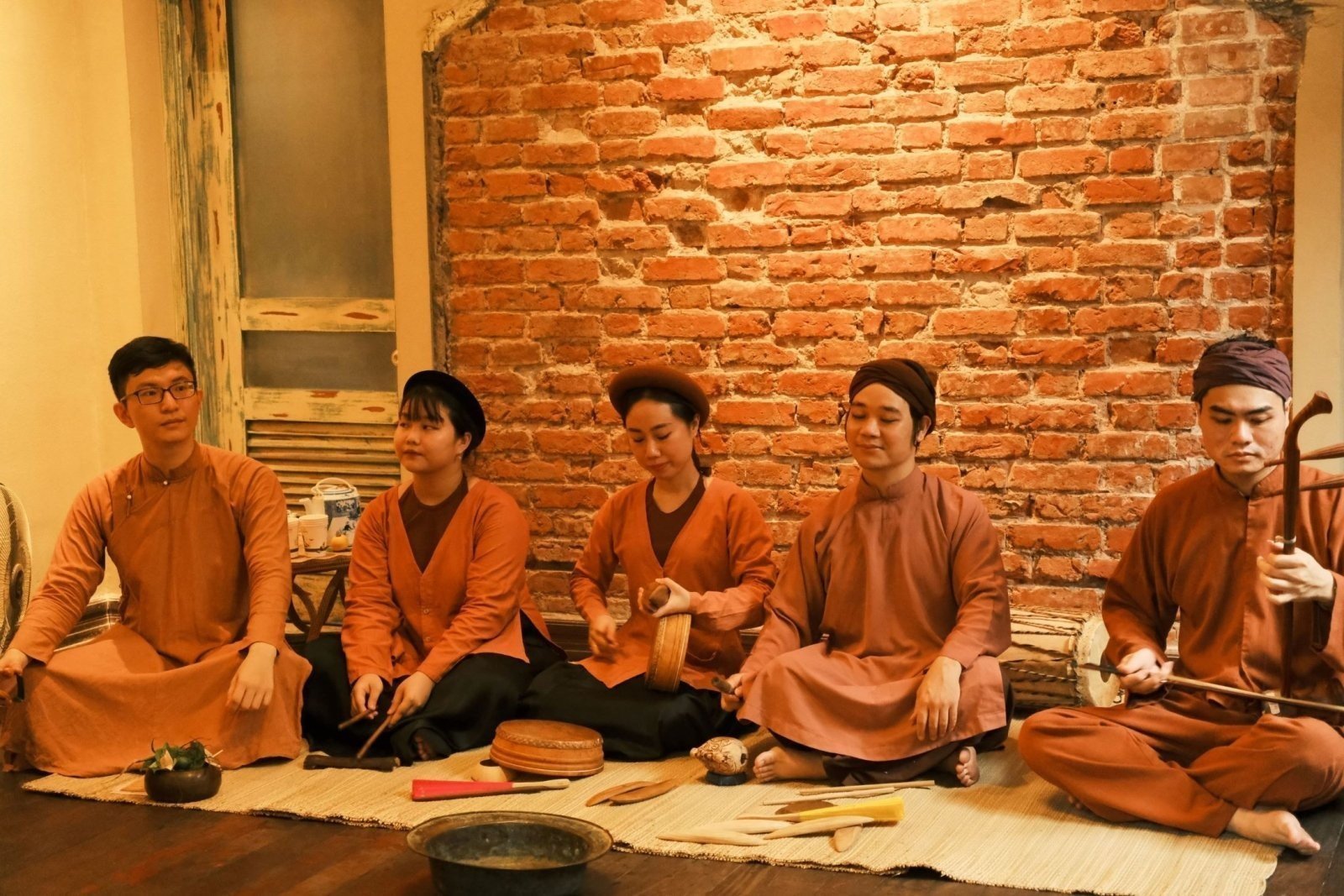“Xam” singing is an old form of folk singing that originated from the creativity of Vietnamese peasants in around 14th century. That form of art performance used to be very popular in the countryside of Northern Vietnam.
History of “xam” singing
The legend has it that King Tran Thanh Tong had two princes named Tran Quoc Toan and Tran Quoc Dinh. In order to choose one in two princes to be the next king, King Tran Thanh Tong asked his sons to go deep into the forest and find rare jewel. Prince Tran Quoc Dinh found the jewel first but unfortunately, he was harmed by his brother. He was blinded both eyes and left in the middle of deep forest. Without anyone by his side, Prince Tran Quoc Dinh used his voice to call birds to bring fruits to him. Thanks to kind birds, he survived and found the way out of forest. After that, he spent time to teach the blind how to play string instruments and sing “xam”. Singing “xam” at first is for fun and then is a way for blind people earn money themselves. Prince Tran Quoc Dinh was very well-known as his talent of singing “xam”. Once, the King invited Tran Quoc Dinh to performance in the palace and found the son. King Tran Thanh Tong knew the truth and punished Prince Tran Quoc Toan. Although Prince Tran Quoc Dinh came back the palace, people has still maintained “xam” singing and honored him as the ancestor of “xam” singing. In fact, there is no historical document recorded that King Tran Thanh Tong had two sons named above. Therefore, the story is only a legend and “xam” singing completely is a creative product of Vietnamese people.
“Xam” singing was originally a form of art performance in the countryside of Northern Vietnam. Then, it was known and become popular in the cities like Hanoi. In the past, it’s easy to see a group of people singing “xam” at the markets, on the wharfs, railway station and even right on the road.
Features of “xam” singing
“Xam” singing is very diverse in subtypes: “xam cho”, “xam co dao”, “xam tau dien”, “xam thap an”, etc. “Xam cho” is a kind of “xam” singing that performed at the market (market means “cho” in Vietnamese), and featured with strong melody. “Xam co dao” has the melody much more smooth than “xam cho”. “Xam tau dien” is a unique subtype of “xam” singing that performed on the train. That kind of “xam” singing is exclusively in Hanoi Capital City. The songs of “xam” singing were come from poems of famous people such as Tran Tuan Khai, Nguyen Khuyen, Tan Da, Nguyen Binh, etc. Some others are composed for the aim of propaganda.
“Xam” is not only the word referring that kind of art performance but also a way to refer the artists who perform “xam”. “Xam” could be male or female but they are usually blind people. “Xam” singing is performed by a group of artists with a vocalist and some other instrumentalists; sometimes just one person singing and playing instrument at the same time. Because of poor condition, their costumes aren’t fussy like in other form of art performances. They wear their casual clothes: “non la” (leaf hat), “ao toi” (raincoat of Vietnamese people in the past), “ao canh”, etc.
The main instruments of “xam” singing are castanets and “dan nhi” or “dan bau”. Besides, drums, “dan day”, “dan gao”, flute, etc are sometimes used in the performance.
At the moment, “xam” singing is at risk of disappearance and nominated by Vietnam’s Ministry of Culture, Sport and Tourism to be a UNESCO’s Intangible Cultural Heritage. Tourists coming to Vietnam can enjoy “xam” singing on the stage in front of Dong Xuan Market (Hanoi) every Saturday’s night.

